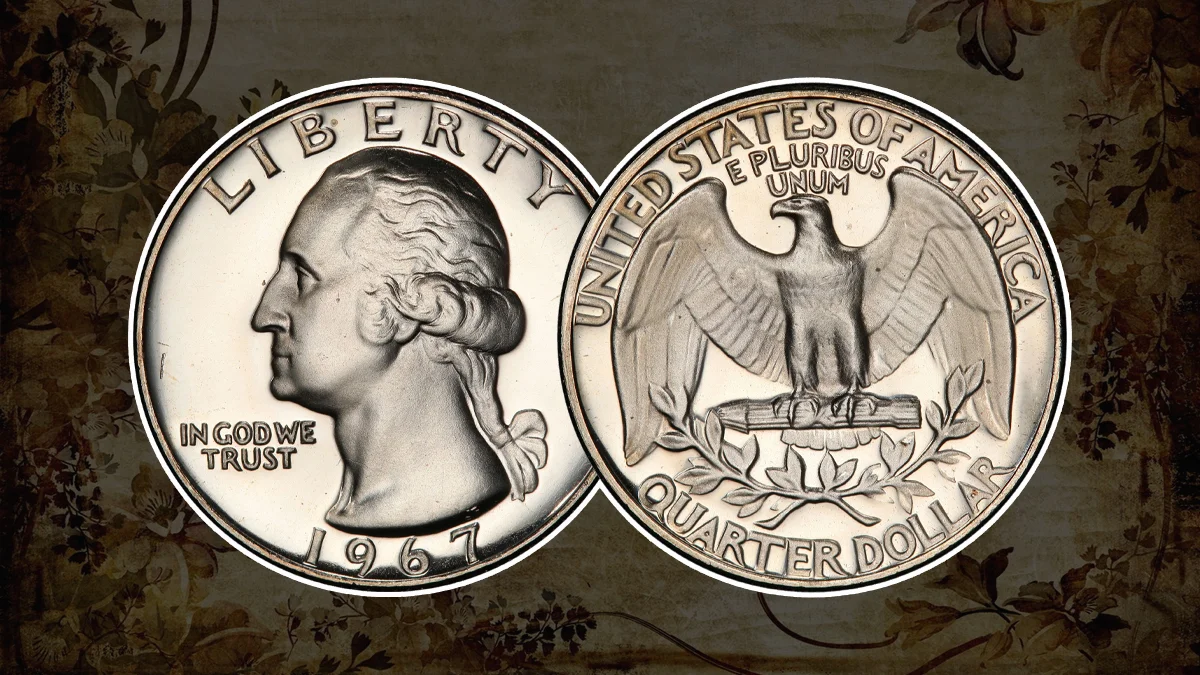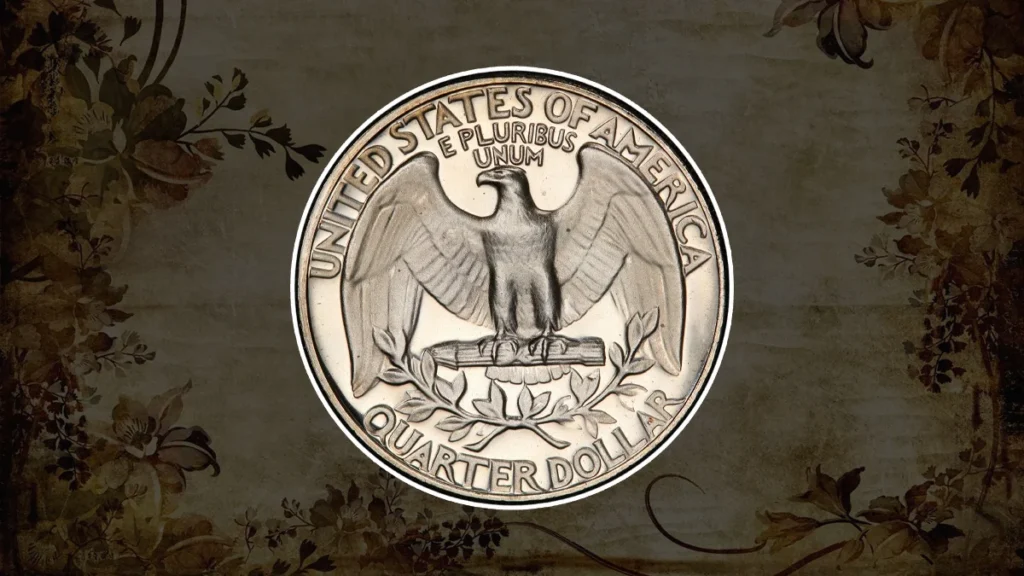
The 1967 Washington Modern Quarter has a special place in American coinage history. It derives from its production during a transitional time for U.S. currency. This year celebrates a time when the United States moved away from silver content in coins, guiding to the introduction of copper-nickel quarters. Despite the huge mintage of over 1.5 billion, this coin remains a subject of intrigue for collectors because of its role in a changing economic landscape. In this article, we will know the overview of the 1967 Washington Modern Quarter.
Coin Mintage Overview
In 1967, the United States Mint had more than 7.2 billion coins across different denominations, with the Washington Quarter’s mintage getting 1,524,031,848. The analysis of the quarter’s production across different minting facilities is as follows:
- Philadelphia: 873,524,000 coins
- Denver: 632,767,848 coins
- San Francisco: 17,740,000 coins (without mintmarks)
Because all of these coins have a mintmark, it can be difficult to identify the exact location of a specific quarter’s minting because of their huge production. For the purpose to avoid hoarding during a nationwide currency scarcity, a large-scale mintage was needed. Collectors consider these quarters more fascinating since they missing mintmarks, yet they typically have little historical value when they are in circulating condition.
History Of 1967 Washington Modern Quarter
In 1932, the Washington Quarter came to be known in celebration of George Washington’s 200th birthday. It was originally minted with 90% silver, but the U.S. Mint had to revise its coin composition in the 1960s because of coin hoarding and rising silver prices. Among the most valuable modern quarters, the changes to the Washington Quarter during this time stand out. Beginning with the 1965 upgrades, the Mint used a copper-nickel alloy to replace the 90% silver content in quarters as a response to the silver difficulties. This marked the end of the silver coin period and the beginning of the current clad coin period.
To avoid coin hoarding, the Mint knowingly skipped mintmarks from 1965 to 1967. This intentional effort to maintain coins in circulation during the recession succeeded through the removal of mintmarks, resulting in it being difficult for collectors to identify coins from different mints. Although mintmarks returned in 1968, the 1967 quarter continues to represent this period of transition.
Coin Specifications
The 1967 Quarter Dollar (25 cents) is part of the Washington Quarter series published by the United States of America. Here are its specifications:
- Country: United States of America
- Year of Issue: 1967
- Denomination: Quarter Dollar (25 Cents USD)
- Mintmark: None (Minted at both Philadelphia and Denver without a mintmark)
- Mintage: 1,819,717,540 coins
- Alloy: Copper-nickel (75% copper, 25% nickel) outer layers bonded to a pure copper inner core
- Weight: 5.67 grams
- Diameter: 24.30 mm
- Edge: Reeded
- Designer: John Flanagan
Design Details
Obverse

According to the statue of George Washington by French sculptor Jean-Antoine Houdon, John Flanagan’s design has Washington facing left. Below the chin, “IN GOD WE TRUST” is written, with the words “LIBERTY” above it and “1967” below it. The letters “JF” representing Flanagan are found near the bust’s base.
Reverse

In Flanagan’s reverse design, an eagle sitting on an array of arrows with its wings expanded and olive branches below are represented. “QUARTER DOLLAR” is at the bottom, and the phrases “UNITED STATES OF AMERICA” and “E PLURIBUS UNUM” are above the side. The coin’s edge is reeded, an arrangement that was also present in previous silver quarters.
Mint State and Special Mint Sets
The 1967 Washington Modern Quarter in Mint State is more valuable to collectors than specimens that have already circulated. Mint State quarters were preserved in huge quantities, but they are not very rare; the average value of an uncertified coin is $5. Coins that have been graded by PCGS or NGC as Gems or better may sell for significantly higher prices, but collectors continue to buy those.
In 1967, 1.86 million Special Mint Sets were produced by the U.S. Mint. Because of its glossy look, new collectors often mistake these coins for business strikes. With ordinary Mint State business striking, which has a satiny or frosty finish, Special Mint Set quarters have an extremely polished texture.
Value of 1967 Washington Modern Quarter
The 1967 Washington Modern Quarter condition has an important effect on its value. Uncirculated representations can attract a higher price tag, especially if they are graded by reputable agencies like PCGS or NGC. Circulated editions are typically just worth their face value.
In 2017, an expensive PCGS MS68 specimen sold for up to $8,812, but since then, values have decreased. The same grade has earned approximately $4,800 in recent years. Values for coins graded MS67+ or lower have also fluctuated, between $80 to $5,170 depending on the specific coin and its situation in the market.
May 2024 observed a rise in the high 1967 Washington Modern Quarter offers on eBay, with sellers making unsubstantiated assertions of errors or rarity. Before making any purchases, collectors need to use care and refer to trustworthy resources such as the Coin value checker.
Also Read –
- 1965 Washington Modern Quarter: A Guide for Coin Enthusiasts
- 1966 Washington Modern Quarter: A Complete Guide
Conclusion
Although having less intrinsic value because of its copper-nickel composition, the 1967 Washington Quarter is still a valuable coin for those who are interested in the transition away from silver in American coinage. The quarter’s huge mintage means that, while it is not more common in circulated conditions, higher grades always attract collectors. A fascinating look at an important year in American monetary policy can be found in the 1967 Washington Quarter, which is a very affordable piece of numismatic history.
